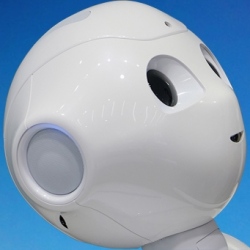
Will this year mark the first drone delivery, or the first time you encounter a robot at work or in your home? We saw significant advancements in robotics and artificial intelligence in 2015. Here’s what we’re watching closely in 2016, a year with big expectations for robotics and AI.
China’s robot revolution
The world’s largest economy has embarked on an audacious effort to fill its factories with advanced manufacturing robots. The government of China hopes this will help the country retain its vast manufacturing industry as workers’ wages rise, and manufacturing becomes more efficient and technologically advanced around the world. The project will require robots that are significantly more advanced and cost-efficient, and the economic and technological ripples could be felt around the world.
China is no stranger to technology-driven upheaval, of course, and it has already invested heavily in robot technology. However, the scale of its new robot revolution will be remarkable. The province of Guangdong, the heartland of Chinese manufacturing, has already promised to invest $154 billion in installing robots. The founder of Foxconn, a company that employs vast armies of workers who make devices such as Apple’s iPhone, has said that his company will install more than a million robots in the next few years.
Expect to see signs that this bold endeavor is either working or faltering, and clues to what it might mean for the rest of the world, in the coming year.
Smarter learning
Robots have always been very effective for precise, repetitive work, but for the most part they’re also dumb as rocks. This is why robots are traditionally used only in carefully designed settings. It also explains why they cannot easily adapt to a new task, and cannot cope with an unfamiliar or uncertain situation. Things are changing, however, thanks to new techniques and algorithms that are enabling robots to learn much more quickly and effectively. There are various methods for enabling robot learning, and some are already producing very promising results in research labs around the world.
One approach in particular could be poised to have a big impact in industrial robotics. Deep learning, which uses large simulated neural networks, has already proven indispensable for training robots to understand the contents of images, video, and audio. Some companies now aim to use the approach to train robots how to see, grasp, and reason.
Knowledge sharing
Another trend to look out for this year is robots sharing the knowledge they have acquired with other robots. This could accelerate the learning process, instantly allowing a robot to benefit from the efforts of others. What’s more, thanks to clever approaches for adapting information to different systems, even two completely different robots could teach each other how to recognize a particular object or perform a new task.
Several projects are underway that are aimed at providing simple, efficient ways for robots to combine their knowhow via the Internet. And it isn’t hard to imagine how this could be applied in industrial settings, for tasks such as identifying and grasping different objects.
Robots get more personal
Several “personal” robots are set to debut this year, and it will be interesting to see how well they are received. With hardware becoming cheaper and software becoming more capable, it isn’t hard to see why some believe the time is right for robotic home companions and helpers.
However, giving a robot a genuinely engaging personal touch isn’t easy. Some prototypes have been disappointing, while the ones that have proven successful have had only limited roles, such as meeting and greeting people in stores. And even in limited scenarios these robots will need to be designed and programmed very carefully in order to push the right social and emotional buttons.
Droning on
2016 seems likely to be the year that autonomous drones finally, well, take off. The U.S. Federal Aviation Administration released regulations for registering drones at the end of 2015, and it is testing technology that could help automate air traffic control for automated vehicles.
While you might not see the skies filled with drones immediately, expect increasingly smart and autonomous drones to be tested in many industries, especially ones where automated surveillance and inspection is useful. And if companies like Amazon, Google, and others have their way, then perhaps some of next year’s holiday gifts might even be delivered through the air.
